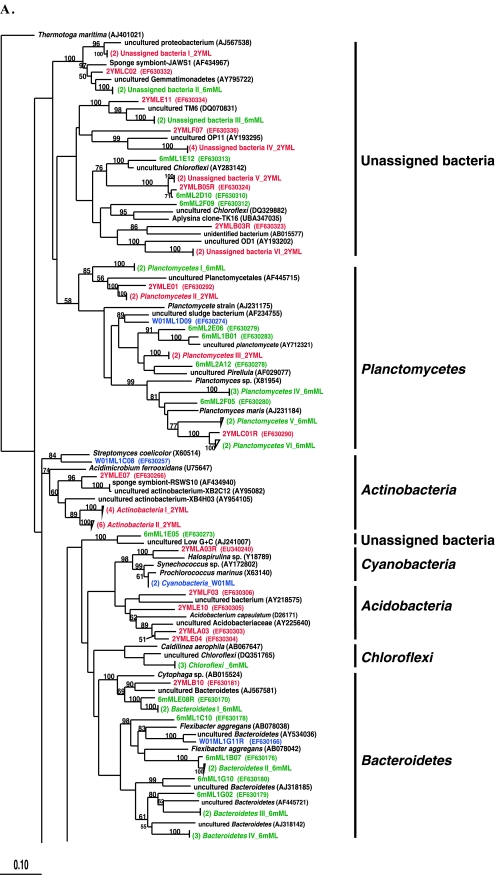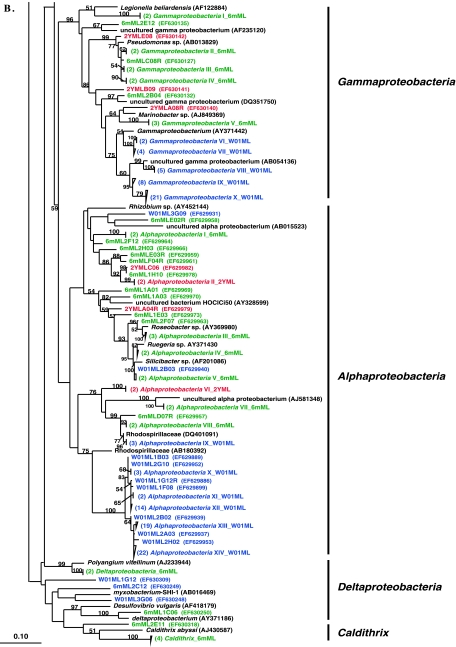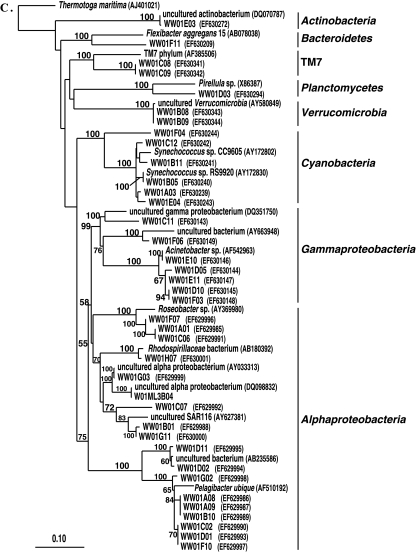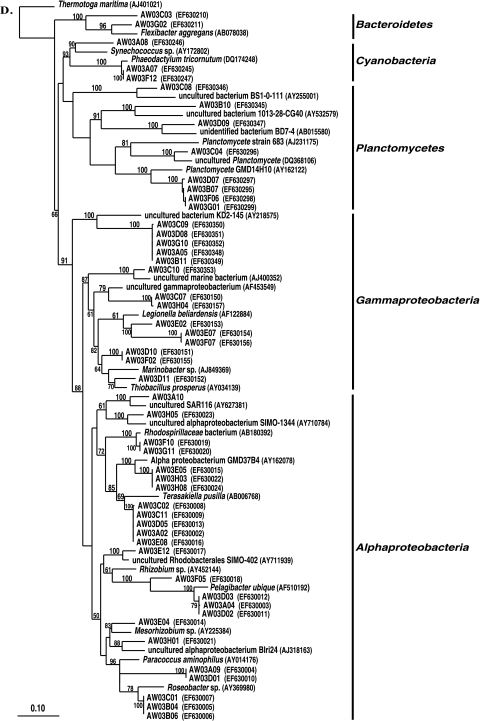FIG. 2.
Rooted neighbor-joining phylogenetic tree of partial 16S rRNA gene sequences of clones that were recovered from the flowthrough system and a wild sponge, including the wild sponge (prefixed W01ML, presented in blue) collected at the same time as the 6-month-aquacultured (prefixed 6mML, presented in green) and 2-year-aquacultured (2YML, presented in red) sponges (A and B), seawater sample collected in the vicinity of wild sponges at Key Largo (prefixed WW01) (C), and water from the flowthrough aquaculture system (prefixed AW03) (D). Bootstrap confidence values of >50% are shown at the nodes. The tree was constructed using ARB. The tetragons represent the clones that are >99.5% similar (see Table S1 in the supplemental material); the numbers listed in bold before the group names indicate the numbers of clones. Thermatoga maritima (NCBI accession no. AJ401021) was used as the outgroup in the analysis. Scale bar indicates 0.10 substitutions per nucleotide position. Reference sequences are shown with GenBank accession numbers listed after each sequence name. Major bacterial groups found in the three libraries are indicated in bold on the right-hand side of the tree.




